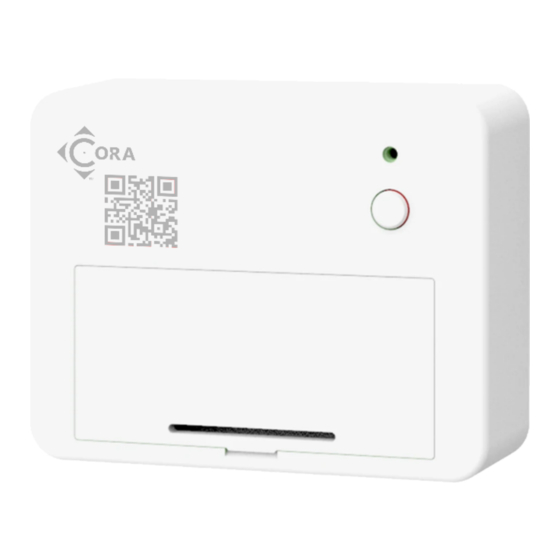CORA CS1040 Manuel de l'utilisateur - Page 8
Parcourez en ligne ou téléchargez le pdf Manuel de l'utilisateur pour {nom_de_la_catégorie} CORA CS1040. CORA CS1040 20 pages. Long range tilt & vibration sensor

About LoRaWAN
LoRaWAN is a low-power, secure, wide area (LPWAN) networking protocol designed to
wirelessly connect devices to the internet in regional, national, or global networks. To use the
CS1040 Vibration Sensor, wireless connectivity to an internet connected LoRaWAN gateway is
required.
For more information about LoRa and LoRaWAN visit the LoRa Alliance webpage:
https://lora-alliance.org/.
Terminology
⧫
Message sent from the Vibration Sensor to the network are referred to as "uplink
messages" or "uplinks".
⧫
Messages sent to the Vibration Sensor from the network are referred to as "downlink
messages" or "downlinks".
⧫
Both uplink and downlink messages may be of either "confirmed" or "unconfirmed" type.
Confirmed messages are guaranteed to be delivered but will consume extra wireless
bandwidth and battery life. These mechanisms are analogous to TCP (confirmed) vs
UDP (unconfirmed) protocols used for IP networks.
⧫
Before a device, such as the CS1040 Vibration Sensor can transmit messages using
LoRaWAN it must go through a "join" process. The Join process involves key-exchange
with the cloud-hosted network provider (The Things Network, Helium, etc.) and is
defined in the LoRaWAN protocol standard. If connectivity is lost due to RF interference,
power loss or other temporary internet outages, the device will need to rejoin the
network prior to being able to transmit messages. This process happens automatically
but is managed in a battery-efficient manner and may take significant time.
CS1010 Long Range Vibration Sensor – User Guide
Page 8
